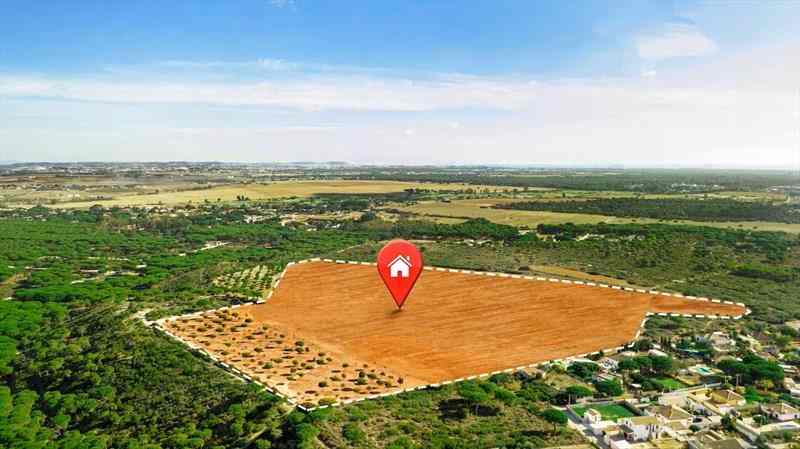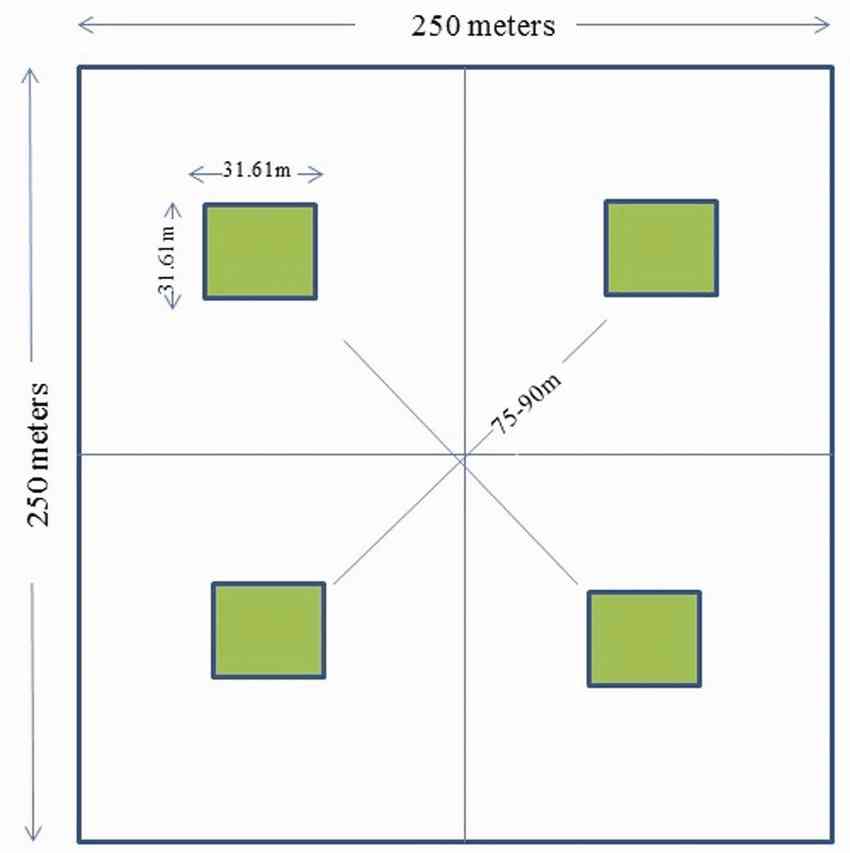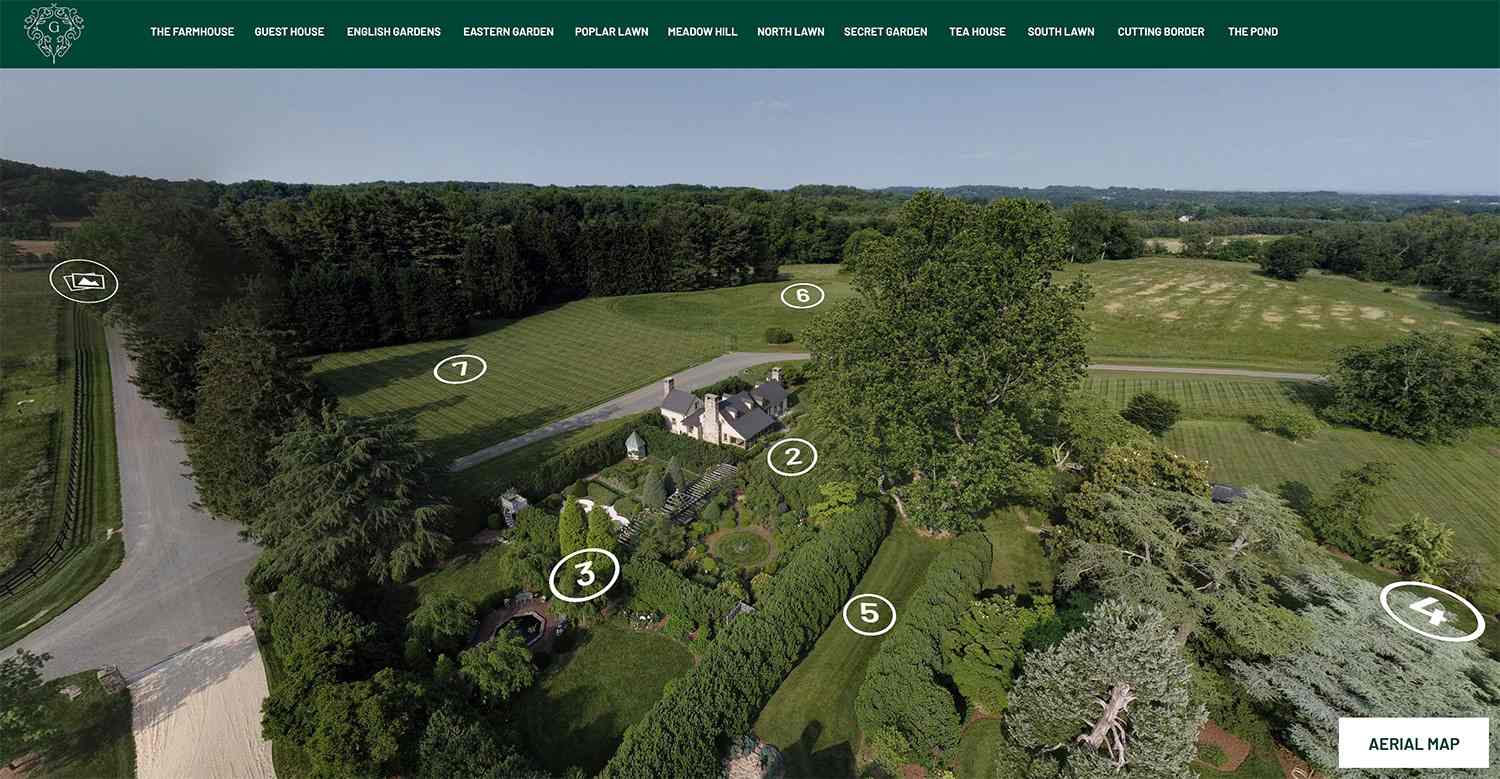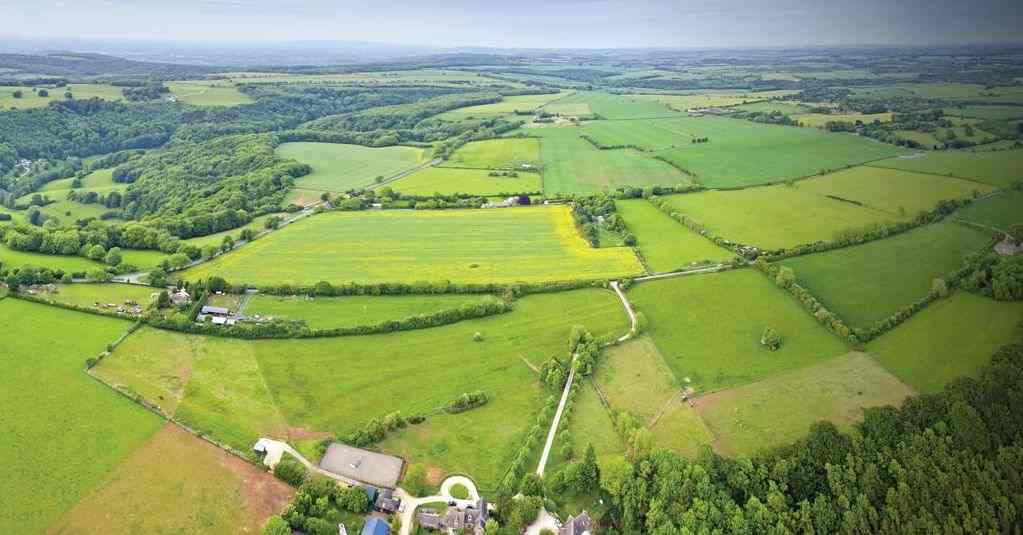Table of Contents
ToggleThe Power of Professional Photography and Videography
In the competitive world of real estate, the importance of making a strong visual impression cannot be overlooked. When it comes to selling land, the use of high-quality visuals makes all the difference in attracting potential buyers. From amazing photographs to engaging videos, these visuals have the power to show the unique features and potential of a piece of land, drawing in interested parties.

In this guide, we will look at how high-quality visuals enhance the attractiveness of land listings, making them more attractive to potential buyers and increasing the likelihood of a successful sale. Whether you are a seller looking to increase the impact of your listing or a buyer in search of the perfect plot, understanding the importance of visual presentation is key to getting through the real estate market effectively.
i. Showcasing Natural Beauty
When presenting land listings, the use of high-resolution images and videos is necessary for showcasing the natural beauty of the property. These visuals capture the nature of the land’s landscapes, ranging from hills to forests and mountains. They offer potential buyers a look into the beauty of the surroundings, helping them envision themselves in such peaceful environment.

Additionally, professional photography and videography effectively identify amazing views, whether it’s of a lake, valley adding to the property’s attractiveness, especially for those seeking beautiful locations. Moreover, these pictures and videos highlight special land features such as big rocks, winding streams, or gentle slopes, showing what the land is like and how it could be used.
By creating emotional responses such as amazement and peacefulness, these images and videos influence buyers’ perceptions and decisions, making them more likely to pursue the property. For nature lovers, the promise of owning land surrounded by landscapes and wildlife is a convincing selling point. High-quality visuals play a major role in attracting buyers drawn to natural beauty, enhancing the attractiveness of land listings. This attracts those seeking a connection with nature.
ii. Highlighting Features
Professional visuals are important in showing the important features of land listings, greatly influencing how potential buyers perceive and decide on a property. Firstly, through high-quality images and videos, water bodies like lakes, ponds, or streams are highlighted, revealing their beauty and recreational potential such as fishing or boating. Additionally, wooded areas are showcased, presenting the attractiveness of mature trees and green vegetation, ideal for buyers seeking privacy and a connection with nature. Moreover, Visuals show how the land looks, including any hills or high areas, which provide beauty and chances for development, such as great views or places for fun activities. By highlighting these aspects, buyers imagine enjoying different activities like hiking, camping, or watching wildlife, making the land more attractive.

Additionally, Pictures show possible ways to use the land, like having resorts by the water, preserving forests, or building homes or businesses on hills. This makes the land more appealing and opens up more possibilities. Professional visuals serve as convincing tools for attracting buyers and showcasing the land’s recreational and developmental potential. This improves their understanding and appreciation of the property’s natural assets.
iii. Illustrating Size and Layout
Illustrating Size and Layout refers to using detailed visuals such as maps, aerial photographs, or diagrams to show potential buyers the specific dimensions, contours, and arrangement of the land. These visuals offer a clear illustration of the land’s boundaries, any natural features like rivers or hills, and any existing structures or developments.
Having a visual representation of the size and layout helps prospective buyers understand the practical aspects of the land. For example, they see how much space they would have for building structures, cultivating crops, or setting up recreational areas.

Furthermore, these visuals help buyers in envisioning how they could utilize the land for their intended purposes. For instance, they assess whether the shape and size are suitable for constructing a home, establishing a farm, or developing commercial properties. This visualization process allows buyers to make more informed decisions about whether the land meets their needs and goals.
Illustrating the size and layout of the land enhances the buyer’s understanding and enables them to imagine various possibilities for utilizing the property effectively.
iv. Creating Emotional Connection
Creating Emotional Connection involves using visually appealing images to bring up emotional responses in potential buyers. When people see amazing images of a piece of land, they feel excited, inspired, or develop a strong desire to own it due to its beauty and potential.
These emotions play a major role in the decision-making process. When buyers feel emotionally connected to a property, they are more likely to develop a sense of attachment and envision themselves enjoying the benefits it offers. For example, seeing landscapes, green vegetation, or beautiful views can create feelings of calmness and relaxation, making buyers imagine themselves spending time in such a peaceful environment.

Moreover, convincing images create aspirations and motivate buyers to fulfill their dreams of owning a piece of land with remarkable features. Whether it’s the attraction of building a dream home, starting a new business venture, or simply having a place to escape and unwind. These emotions drive individuals to take action and take the opportunity.
Through creating an emotional connection through visually appealing images, sellers instill a sense of longing and aspiration in potential buyers, ultimately influencing their decision-making process and increasing the likelihood of a successful sale.
v. Enhancing Credibility
Enhancing Credibility through high-quality visuals involves presenting professional and detailed images that reflect a thorough and accurate representation of the property.
When potential buyers encounter listings with well-composed visuals, they perceive the seller as professional and trustworthy. This perception comes from the understanding that producing high-quality images requires effort, investment, and a commitment to presenting the property in the best possible light.

Furthermore, attention to detail in visuals, such as clear shots of key features, accurate representations of the property’s condition, and complete coverage of the land, reassures buyers about the credibility of the listing. It demonstrates that the seller is transparent and forthcoming with information, which creates trust in the accuracy and authenticity of the listing.
By prioritizing high-quality visuals, sellers not only showcase the property effectively but also communicate their professionalism and dedication to providing an honest representation. This, in turn, instills confidence in potential buyers, increasing the likelihood of them viewing the property positively and moving forward with the purchasing process.
vi. Offering Virtual Tours
Offering Virtual Tours involves providing potential buyers with engaging experiences through videos and 360-degree virtual tours. This allows them to explore the property remotely from their own homes.
These virtual tours offer active and interactive way for buyers to experience the land without physically being present. By utilizing technologies such as 360-degree cameras and virtual reality platforms, sellers create virtual environments that give buyers a complete view of the property’s features, layout, and surroundings.

The benefits of offering virtual tours are many. First, they provide convenience for buyers who may not be able to visit the property in person, whether due to distance, time constraints, or other logistical reasons. This accessibility expands the pool of potential buyers, attracting individuals who might otherwise have been unable to consider the property.
Secondly, virtual tours offer a more engaging experience compared to traditional photographs or descriptions. Buyers virtually navigate through the land, zoom in on specific areas of interest, and get a realistic sense of the property’s scale and atmosphere. This interactivity enhances their understanding and appreciation of the land, leading to a more informed decision-making process.
Additionally, virtual tours are be particularly effective in capturing the attention of remote or out-of-town buyers who may be unfamiliar with the area. By providing a detailed and realistic representation of the property, sellers can arouse the interest of these buyers and inspire them to explore further or even make a purchase remotely.
Offering virtual tours enhances the marketing strategy for the land by providing a modern, convenient, and engaging way for potential buyers to experience the property firsthand, regardless of their location.
vii. Highlighting Development Potential
Highlighting Development Potential involves using visuals to demonstrate the various possibilities for developing the land. This include subdividing it into smaller parts, designing landscaping features, or planning for different types of development such as residential, commercial, or agricultural projects.
Visual representations play a major role in communicating the potential of the land to prospective buyers. For example, maps or diagrams show potential subdivision plans, indicating how the land could be divided into smaller lots or parcels. This helps buyers visualize the scale and layout of the development possibilities.

Additionally, visuals represent proposed landscaping designs, showing how the land could be transformed to enhance its appearance and functionality. This includes concepts for gardens, pathways, water features, or recreational areas, depending on the intended use of the property.
Furthermore, visuals illustrate potential development scenarios for residential, commercial, or agricultural purposes. For instance, they show conceptual designs for housing developments, retail centers, office buildings, or farm layouts. Sellers presenting these possibilities visually create the imagination of buyers and demonstrate the investment potential of the land.
Highlighting development potential through visuals is an effective way to attract buyers who are interested in investing in land for future development. Through showing clear and persuasive pictures of what’s possible, sellers get the attention of buyers who want to make the most out of the land.
viii. Providing Context
Providing Context involves using aerial photography or drone footage to give potential buyers a better understanding of the land’s surroundings. This includes showing neighboring properties, nearby amenities, and access points.
Aerial photography or drone footage offers a broad view of the land and its immediate surroundings. Showing neighboring properties, enable buyers to see how the land fits into the overall landscape and get an idea of the surrounding environment. They evaluate factors such as the proximity of other buildings, the types of developments nearby, and the overall character of the area.

Furthermore, highlighting nearby amenities such as parks, schools, shopping centers, or transportation hubs helps buyers evaluate the convenience and desirability of the location. They see what facilities and services are available within easy reach, which can influence their decision-making process.
Additionally, showing access points such as roads, highways, or public transportation options provides buyers with valuable information about connectivity and accessibility. They assess how easily they can travel to and from the property and whether it meets their needs in terms of transportation.
Providing context through aerial photography or drone footage allows buyers to gain a broader perspective of the land and its surroundings. This helps them make more informed decisions about the location and connectivity of the property, ultimately assisting them in evaluating its suitability for their needs and preferences.
ix. Encouraging Social Sharing
Encouraging Social Sharing involves creating visually convincing content that encourages buyers to share listings on social media platforms. When buyers find listings visually appealing, they are more likely to share them with their friends, family, and followers on platforms like Facebook, Instagram, or Twitter.
Visuals have a strong impact on social media engagement. Eye-catching photos, videos, or virtual tours capture the attention of viewers as they scroll through their feeds. When buyers come across a visually appealing listing, they feel obliged to share it with others who might be interested, whether they are looking for property themselves or know someone who is.

Encouraging social sharing enables sellers to expand their reach and increase exposure for their listings. When buyers share listings with their networks, they expose the property to a wider audience beyond those directly searching for real estate. This leads to more views, inquiries, and potential buyers, ultimately generating more interest in the property.
Furthermore, social sharing creates a sense of social proof and credibility. When buyers see their peers sharing a listing, they perceive it as more trustworthy and worthy of consideration. This influence their decision-making process and increase the likelihood of them exploring the property further or contacting the seller for more information.
Encouraging social sharing of visually compelling listings is an effective way to utilize the power of social media to reach a larger audience. This increases exposure, and generate more interest in the property. It uses the power of social networks to make marketing stronger and get more people interested in buying.
x. Differentiating from Competitors
Differentiating from Competitors involves using high-quality visuals to make a property listing stand out from others in the market. In a crowded environment where potential buyers are given with numerous listings, having visually attractive content makes a significant difference.
High-quality visuals capture the attention of potential buyers and leave a lasting impression. When a listing has clear, engaging images or videos that show the property’s best features, it becomes more memorable compared to listings with lower-quality visuals.

By standing out from competitors, a listing attracts more interest and inquiries from potential buyers. When buyers are presented with multiple options, they are more likely to focus on listings that catch their eye and interest. High-quality visuals create a sense of professionalism and credibility, which makes buyers more willing to inquire further or make an offer on the property.
Furthermore, differentiation from competitors leads to increased competition among buyers. When a listing is viewed as more attractive or desirable, it generates a sense of urgency among potential buyers who want to secure the property before others do. This results in more offers and potentially higher sale prices for the seller.
Using high-quality visuals to differentiate a listing from competitors is an effective strategy for attracting more attention, inquiries, and offers. Sellers increase their chances of achieving a successful sale in a competitive market by making the listing more memorable and attractive.



4 Comments